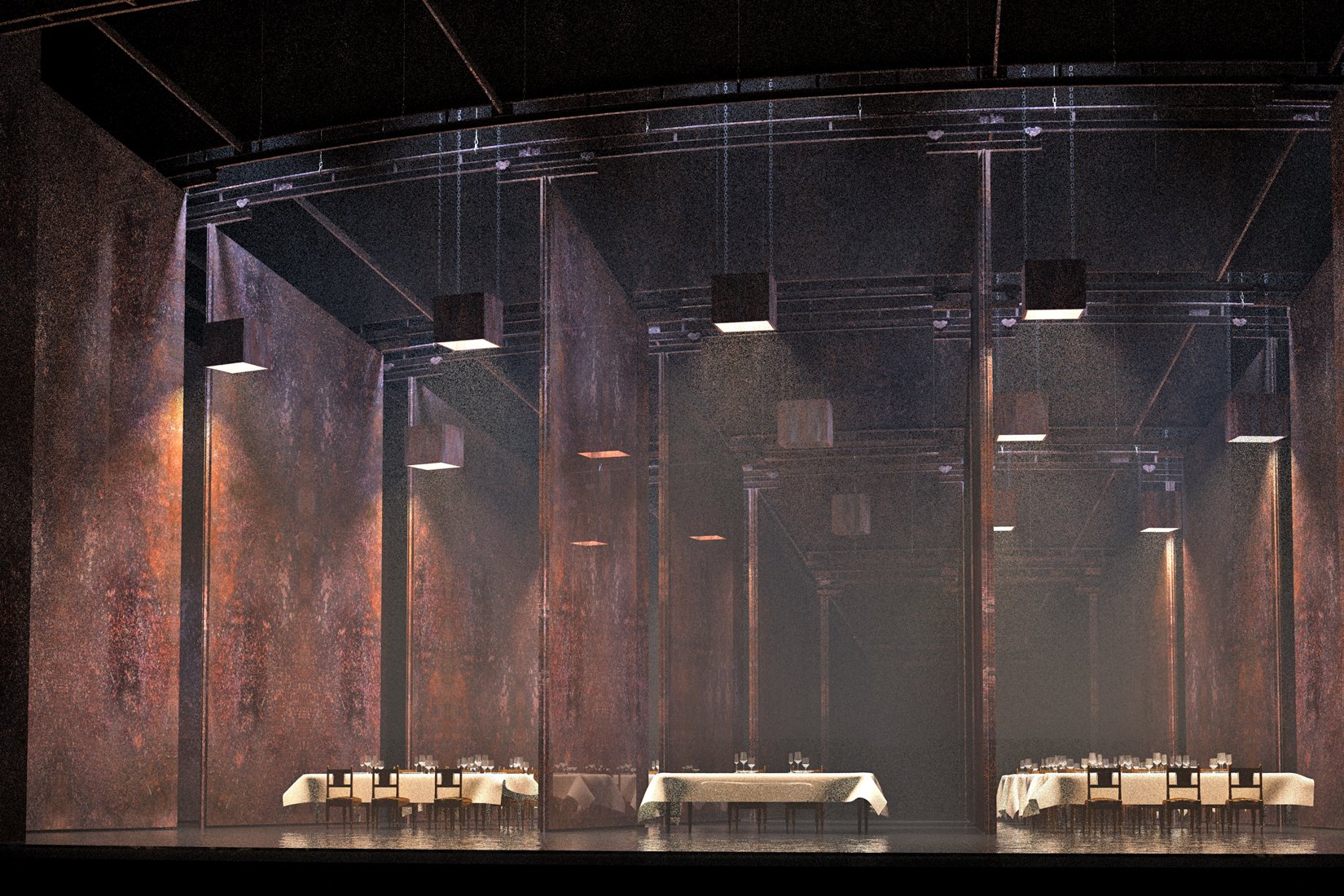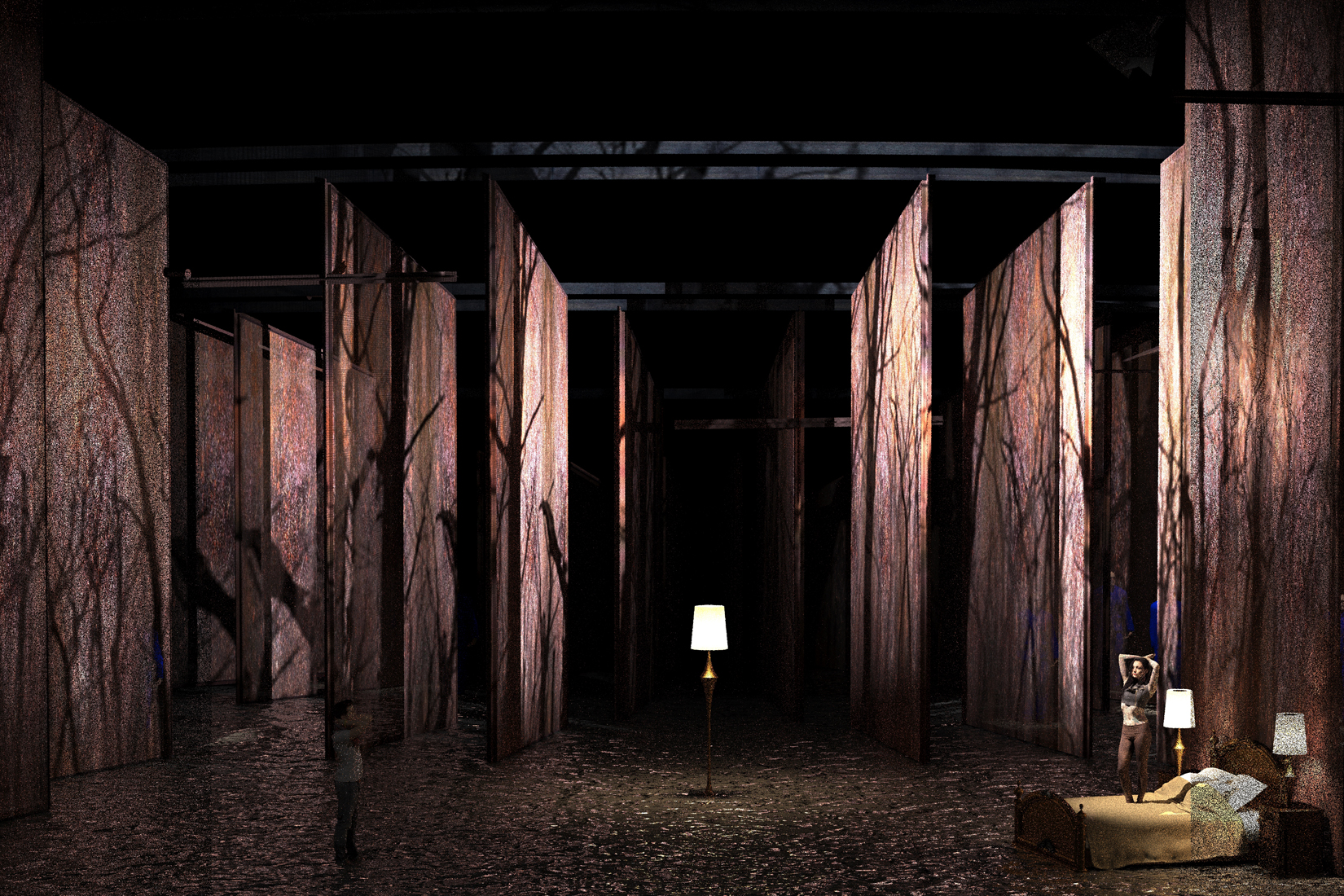
Premiered in 1934 and banned in the Soviet Union for its modernist sound and immoral storyline, 'Lady Macbeth of Mtsensk' is one of the most fascinating works of the 20th century. Halfway between a psychological portrait and social criticism, Shostakovich's second and final opera seeks to understand the motives that drive a high-class woman to commit the most horrific crimes, painting a horrifying picture of corruption, moral degradation, and patriarchal oppression, which Àlex Ollé emphasizes in this new production.
In the original novel by Nikolai Leskov, which inspired Lady Macbeth of Mtsensk, the character of Katerina Ismailova is nuanced. Resentful of her husband, her family, and her incentive-free life in a prosperous but boring rural Russia, she lets herself be dominated by the irrationality of her instincts, first abandoning herself to sex—committing adultery—then committing a series of horrible murders. In the end, Leskov gives his character—a tragic figure rather than a heroine—a grim fate, drowning alongside Sonietka, the woman who stole her lover Sergei, in the waters of a river en route to a labor camp in Siberia.

Ultimately, she deserves exemplary punishment, yet still has the strength for one last act of murder. Shostakovich, however, made a different interpretation when he decided to adapt the novel into an opera: instead of viewing Katerina as part of the immoral bourgeoisie of 19th-century Russia, he treated her as a victim of a corrupt, repressive, and patriarchal society.
«The new production by Àlex Ollé seeks to delve into Katerina's psychology, portraying her as a defensive victim in an oppressive, patriarchal society»
His approach to this woman is more compassionate than condemning: if she seeks liberation through sex, it is because her father-in-law only sees her as a future mother of an heir and a family caretaker; if she kills her husband, it is because he is the last obstacle preventing her escape from the prison in which she lives.

This idea underlies Shostakovich and Alexander Preis's adaptation in the libretto of Lady Macbeth of Mtsensk, where they softened Katerina's wickedness by avoiding the cruel scene from the book: the cold-blooded murder of her eight-year-old nephew. This perspective has intrigued Àlex Ollé for proposing a new production that focuses on Katerina's complex psychology. For Ollé, her actions are neither justified nor logical—especially when each new step worsens her situation—but they have a coherent explanation that highlights her desperate situation: although she lives in a gilded cage, she remains forever trapped in a hostile world.
«Alfons Flores's scenography will design, through mobile panels, the opera's spaces, conceived as physical and social prisons that push Katerina to the limit»
Alfons Flores, Ollé's regular scenographer, designed a system of mobile rust-textured plates for this production. These plates, in their movement, create suffocating and corrupted spaces: Katerina's room, the police station, and the columns of prisoners heading to Siberia. Also, as Ollé did in his production of Pelléas et Mélisande (Debussy), the stage floor will be covered by a liquid surface, a detail with a metaphorical reading since it is in water that Katerina will drown to finally escape her degraded life.

Another noteworthy aspect of this opera is its frenetic rhythm. Shostakovich divided the action into four acts, but its structure is essentially a series of scenes separated by instrumental interludes. In the early 1930s, Shostakovich composed film scores for the Soviet film industry and was familiar with the concept of montage. Lady Macbeth of Mtsensk is thus an opera clearly influenced by cinematic rhythm, and the score continuously underscores moments of greater visual impact.
The most characteristic is the first sexual encounter between Katerina and Sergei, but the same can be said of the attempted gang rape of Aksinia in the first act, Boris's poisoning death in the second, or the final scene where, after realizing that Sergei no longer loves her, Katerina throws herself into the river, dragging Sonietka with her. If Lady Macbeth were a movie, what genre would it be? Undoubtedly, a thrilling thriller with large doses of violence, tension, and sex. Ollé's production promises to maintain that fast pace and delve into Katerina from her first layer of meaning, that of the murderess who fascinates us by the excess of her cruelty.
«Lady Macbeth has a strong influence from cinematic montage, and Ollé aims to preserve the story's fast pace, turning it into a kind of thrilling thriller»
Lady Macbeth of Mtsensk allows for many interpretations. It has been defended as a feminist opera, an anti-bourgeois opera, even an anti-Soviet opera: Stalin believed that Shostakovich was attacking not the immorality and corruption of the Tsarist era, but that of the Soviet Union in the 1930s, just as the Red Terror spread. It is a piece that admits a moralistic patina and another that justifies Katerina's immorality as a victim of a hostile environment.
The production at the Liceu takes a bit of all this: it tries to understand Katerina without justifying her, indicates the existence of dark forces that shape people's destinies, and denounces a dense climate of immorality easily translatable to any historical period. In short, a version that invites reflection on our time as well.


